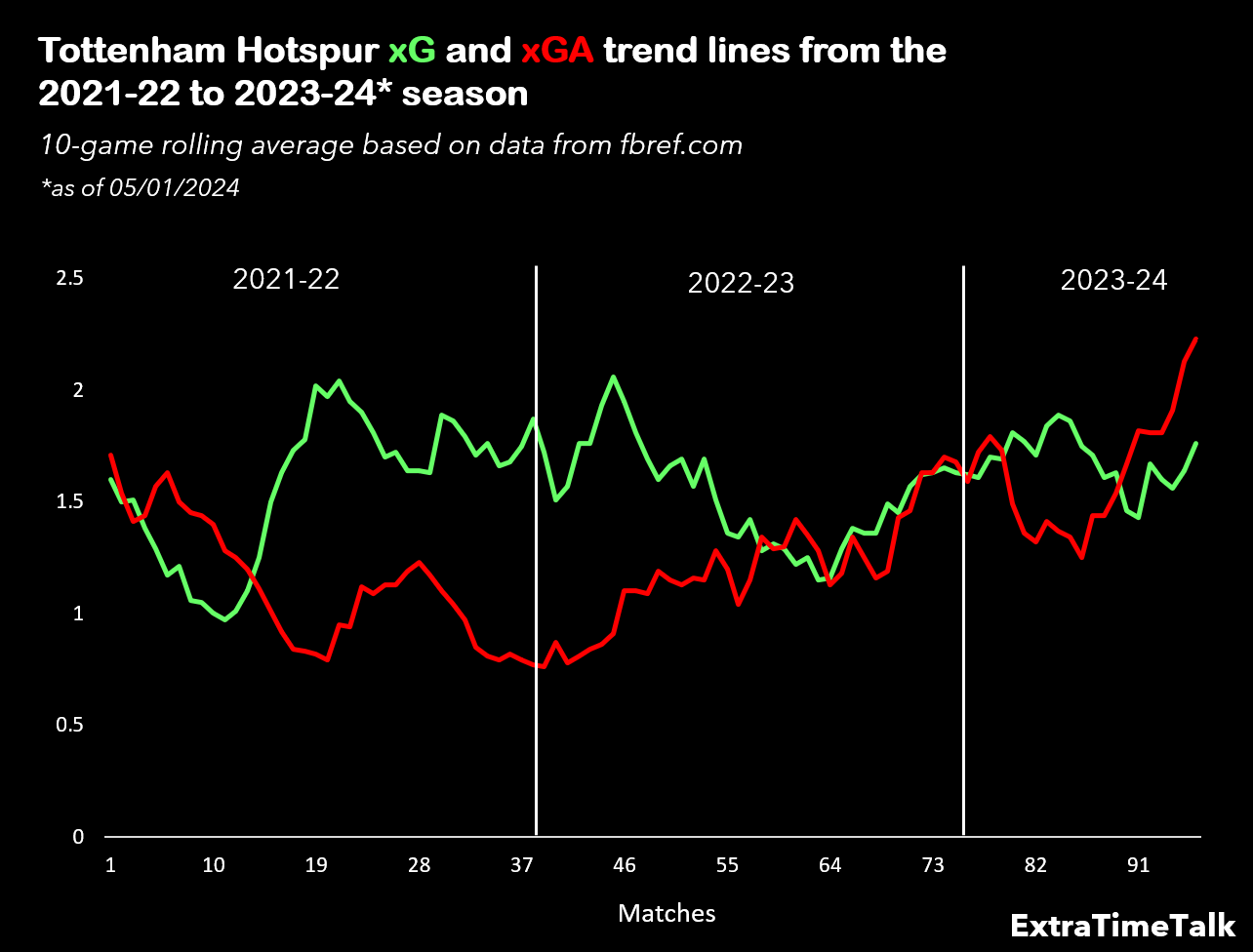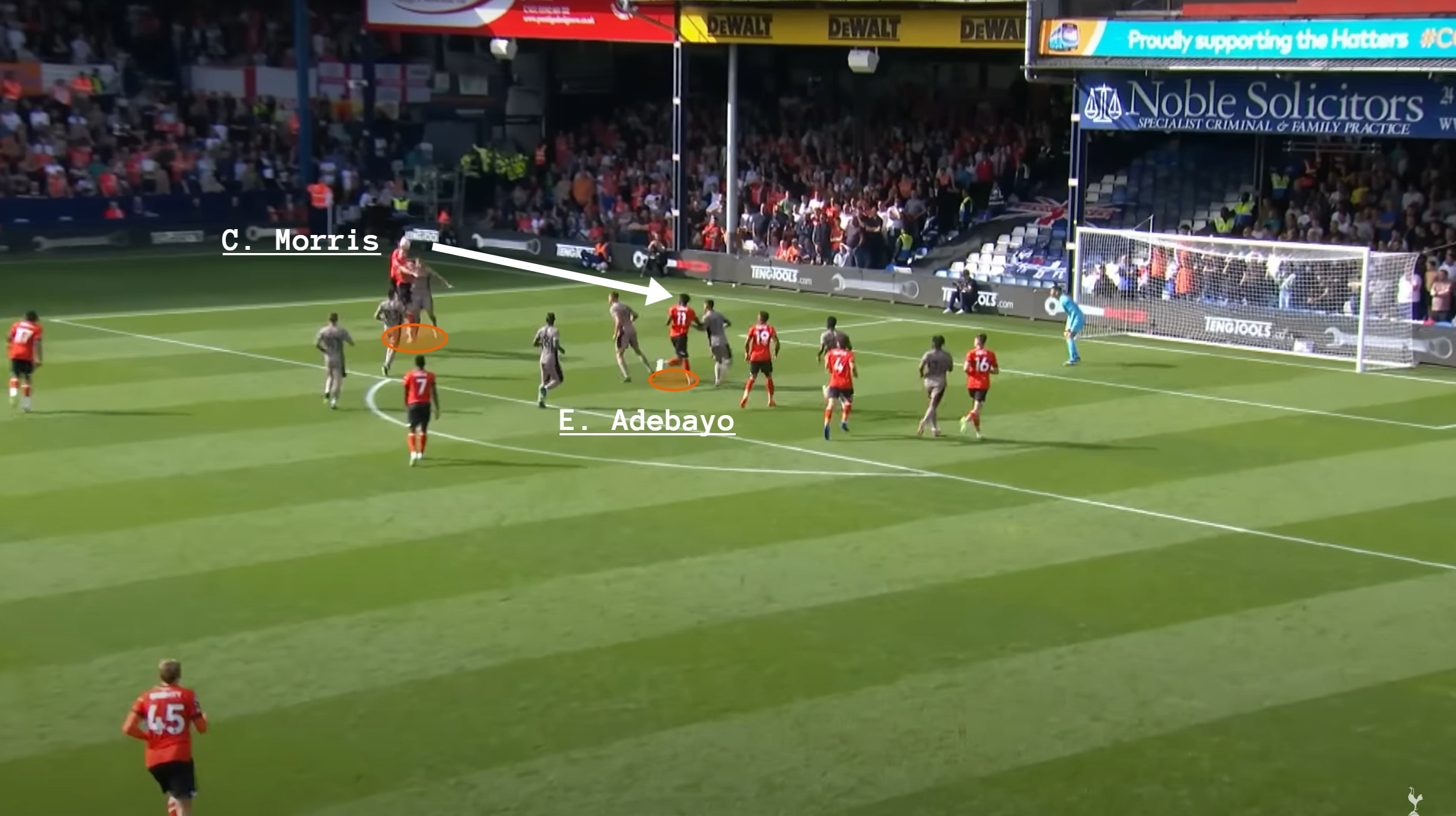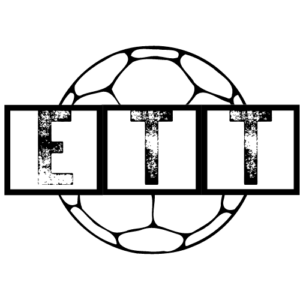In a very brief period, Ange Postecoglou has revolutionized the Tottenham Hotspur culture and football with an attractive offensive flair that is pleasurable to watch. His work in these past months has earned the respect of many, especially Tottenham fans, who have been woefully accustomed to dull styles of football over the years.
There are many appreciators of Ange Postecoglou, but critics have duly followed as they question his ultra-attacking system since they suspect it to be naive and ignorant.
Although their verdict on the Tottenham manager’s approach is disputable, the grounds of their argument hold valid reasoning.
The evolution of the Tottenham playstyle
The three successors who took over the helm after the departure of Mauricio Pochettino were defense-minded coaches who preferred ceding possession and hurting opponents on the break.
Though there is no “right way” of playing football, defensive styles are often tough to watch for the entirety of a season. In the case of Spurs, it lasted for almost four years.
The xG (expected goals) and xGA (expected goals against) chart shows us that the defensive approach was a success for Tottenham under Antonio Conte, as they created more chances than they conceded for a substantial period – bringing them qualification for the Champions League in 2021-22 after failing to do so for two consecutive seasons.
However, that run concluded halfway through the last campaign, resulting in the Italian manager and the club parting ways.

In the search for renewed purpose and identity, Daniel Levy and the board decided to bring in the Australian manager who was clinically successful at Celtic – Ange Postecoglou.
His shift in approach is slowly reflected in the chance creation (xG) figures, as the offensive numbers are improving from last season’s low. However, the chances conceded (xGA) output is quite concerning since they are significantly high in a historical context for Spurs while being shockingly disappointing compared to their peers.
The following statistic might surprise many – Spurs rank as the fourth-worst defensive team in the Premier League for chances conceded (xGA) – only above West Ham United, Luton Town and Sheffield United.

The underlying data reveals that Ange Postecoglou’s side concedes a high volume of shots per game, however, the shots on target and npxG per shot (non-penalty expected goals per shot conceded) – measuring the quality of chances conceded – figures do not seem alarming compared to the rest of the division.
Their mediocre ranking in average distance per shot conceded also suggests that opponents are concerningly generating chances close to the goal.
Furthermore, Tottenham is interestingly conceding the same volume of shots on goal compared to last season. However, they are providing more clear-cut chances for opponents in the current campaign – represented by the higher average distance per shot last campaign and npxG per shot.

A justification for all this could be the five penalty goals conceded, which increase the opponent’s probability of scoring a goal and decrease the average distance per shot.
However, it cannot excuse the defensive openness since Tottenham still ranks as the fifth-worst defensive team, even when deducting the xGA contributed by penalties.
So, why is Tottenham defensively vulnerable?
Difficulty in dealing with set-pieces
When rewatching the highlights of Tottenham’s past twenty Premier League matches, a prominent issue that stands out is their weakness in defending set-pieces. Although the North London club has only conceded four goals in the Premier League through such situations, the underlying data portrays a worrying image.
Digging into the numbers, Tottenham ranks first for shot-creating actions (offensive actions that lead to a shot) conceded from dead-ball situations.

An explanation could be the departure of the renowned set-piece coach, Gianni Vio, who was responsible for Tottenham’s ruthlessness from dead-ball situations in the prior season.
Without an adequate replacement in the coaching staff, Tottenham has suffered from set-piece situations this season, where they have conceded numerous chances due to poor defending.
In an interview, Gianni Vio once said: “We don’t only train for the first contact, but all aspects. For example, 80 percent of the goals scored from corners are from the second ball.”
However, Tottenham’s problems lie with dealing with the first and second balls. Sometimes, even both.
When Tottenham faced Aston Villa, they conceded a goal after failing to get first contact on the cross from Douglas Luiz, which Pau Torres met to equalize the score for the visitors.

Against Everton, Emerson Royale dealt with the inswinging corner, but the second ball fell to the feet of Andre Gomes. With no immediate pressure on him, the midfielder could easily slot the ball into the bottom left corner, which he did.

In their narrow victory over Luton Town, Ange Postecoglou’s team suffered an early scare when Elijah Adebayo was presented an opportunity in the penalty box after the first and second balls from a freekick were poorly defended by Tottenham.

Reality will catch up soon
Tottenham has substantially overperformed the underlying defensive numbers – the xGA indicates that Ange Postecoglou’s side should have let in 33 goals, but they have only conceded 28 – the highest overperformers in the league.
Guglielmo Vicario is responsible for this as his remarkable performance and consistency this season for Tottenham have saved six goals, according to the ‘post shot xG +/’ metric, which measures the difference between the post-shot xG (goals they should have conceded) and actual goals conceded. A positive value denotes a greater ability to save shots, whereas a negative figure indicates underperformance.

Although the above chart illustrates the Italian goalkeeper’s brilliance, it would be absurd to expect him to maintain that level of form. If the underlying data does catch up, which is more likely than not, Tottenham will suffer.
Before that happens, Ange Postecoglou must find the tools and repair the leaky defense.

